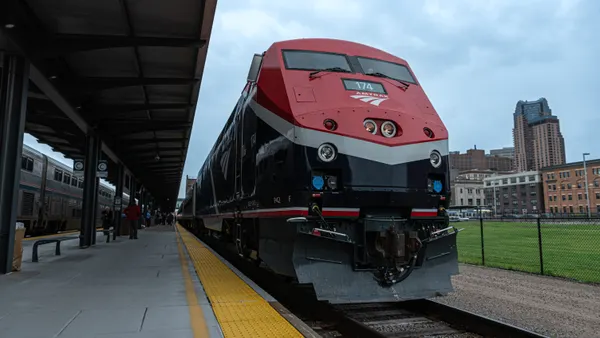Dive Brief:
- Results from a survey of more than 1,000 U.S. residents revealed that public transit is underutilized, with only 19% of respondents using it every week.
- The survey, conducted by London-based technology company Masabi, found people are willing to combine ride-sharing with public transit options, with 35% already doing so on an occasional basis.
- Convenience is a top priority for riders, and even minor improvements to increase convenience can boost ridership of public transportation.
Dive Insight:
Traffic congestion in urban areas is on the upswing, yet at the same time, public transportation ridership is declining. The survey results show that with the increasing availability of transportation alternatives like ride-sharing, people mix and match their mobility options to optimize their journeys. Convenience drives their decisions more than cost, travel time or even necessity. The findings suggest a few targeted solutions could help cities build more integrated public transportation systems that attract riders and reduce congestion.
Overall, analysts found attitudes toward public transportation are not as negative as some might think. A third of the respondents (32%) reported that their local transit options were improving, and nearly half (49%) thought they remained the same.
Despite this, respondents overwhelmingly underuse public transportation, with 70% of respondents reporting they drive on a weekly basis. And with most Americans car-bound, congestion only worsens. According to INRIX, 10 U.S. cities made the top 25 list of cities worldwide for having the worst traffic congestion. As a result, the U.S. ranked first as having the most congested cities in the developed world, with drivers spending on average 41 hours a year in traffic, at a cost of $1,445 per driver.
The news may sound grim, but according to Masabi, the numbers represent an opportunity. To raise them, the analysts looked at why people chose public transportation, even infrequently. More than 30% of all people surveyed said convenience was more important than cost. "Even minor improvements in convenience can boost ridership numbers," the analysts wrote. Cities can accommodate these desires by adding technology that provides location tracking, quick payments, and trip planning and partnering with private companies that offer ride-sharing.











